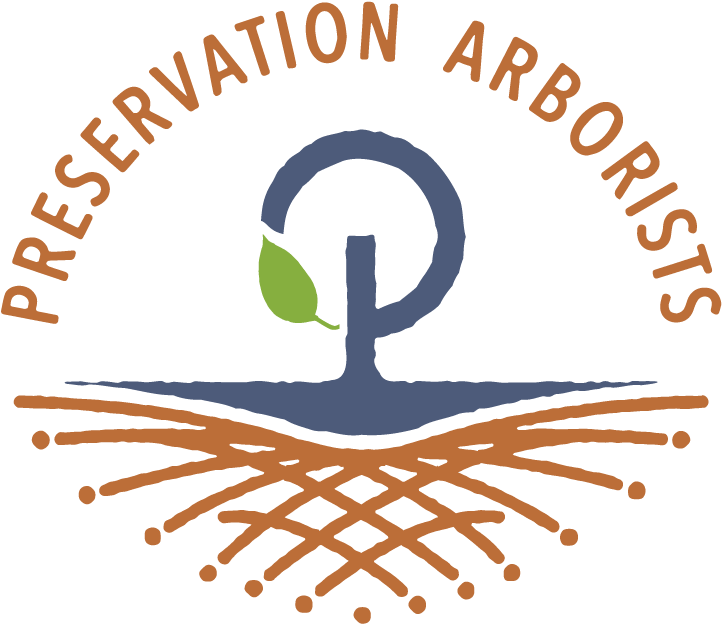How Karla & Preston preserve their White Oak.
Why choosing multiyear care with focus on the soil matters.
View of the Oak, February 2022.
25 or so years ago:
Someone else owns what will become Karla and Preston’s house. A White Oak flourishes in front. The owners, for some reason, decide to fill in the sloping yard. They pour soil around the Oak. Install a brick wall. A walkway. The original grade disappears and fill blankets the Oak’s root zone. This is a catastrophe for the tree.
20 years ago:
Our clients Karla and Preston move into the home. They live under an Oak that is trying to survive. The problem is, you can’t see the struggle, yet. White Oak is one of the hardiest trees, if not the hardiest of all. The leaf tips are not dying back, so nothing’s evident. But under the fill soil, the roots are suffocating. Oxygen has no way down into the original soil. This is turning the soil anaerobic, killing the microbiome the tree relies on. It is only a matter of time: the roots will rot and the tree will decline.
How much time passes?
Time passes. Someone prunes the Oak but the cuts are no bueno, stressing the tree even more by removing leaves and branches (food!) and opening wounds throughout the canopy.
Time passes into time.
Tree time is different from human time. This mature White Oak is still trying to cope with what happened to it, 25 or so years before.
Two years ago:
Karla and Preston reach out about other trees in their yard. Chardin begins a root collar excavation on the White Oak – he is going to dig down to the root collar of the tree, which is at original grade, and expose it to the air. It’s a way for him to see what’s going on, how deeply the trunk tissue was buried years ago.
Discovery of the Oak’s buried root collar begins.
And the trunk tissue of this White Oak is buried deep. About 20" deep. Chardin calls on TJ of Crown, Root, and Soil to help begin the delicate but heavy lifting: returning the Oak’s root zone to its original grade, which will return the tree what it knew as a sprouting acorn: trunk tissue grows upward, root tissue grows down.
This is an archaeological process, and as Chardin and TJ work, they aren’t discovering roots; they are discovering the heavy layer of fill. They stop. They have to.
They know, from peers who also work with trees and soil, that the tree is vulnerable. The soil the roots live in now and have lived in for years is compacted. There is no air in the soil, no looser room for oxygen, carbon, and water that the tree needs. But if the fill is removed all at once, it could stress the Oak too much. Too much change, too fast. They could lose the tree, working too quickly.
A decision has to be made. Chardin tells Karla and Preston what needs to happen in order to save their Oak: the yard will look like an archaeological site for a couple of years. Luckily for this tree, Karla and Preston are game. They can’t wave a magic wand and take what’s happened to this Oak back. But they can save the tree.
They decide to save the tree.
Present day
Karla calls the area around the Oak her swimming pool. Preston sometimes comes out and pretends to dive in. It is something they have to explain to their neighbors with more conventional lawns: they are saving a tree.
A Red Oak or a less hardier tree would be dead by now. And many homeowners would have given up, had the White Oak taken down. Not Karla and Preston.
Slowly, Chardin and TJ remove the fill. They watch the tree for changes. In two more sessions, the work should be done.
Any change to a tree's soil is stressful, so Chardin has to question himself all the time. Is this the right thing to do? “The results are convincing me,” he says.
“It’s a good tree, a beautiful tree,” says a neighbor, walking by. And that’s right.
Below: a glimpse of our multiyear care of this tree.
















